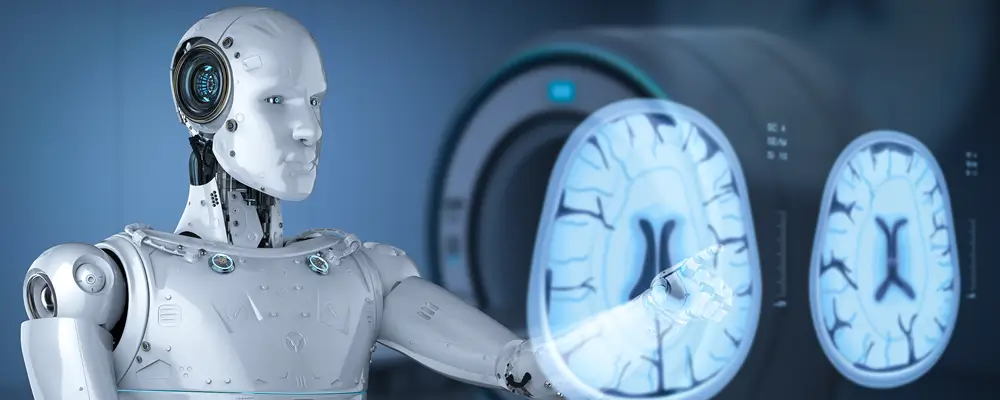AI is revolutionizing medical diagnostics, enhancing healthcare professionals' ability to detect and diagnose diseases with unprecedented speed and accuracy. Let's explore how this technology is augmenting clinical expertise and improving patient outcomes.
A. AI-powered Imaging Analysis: Seeing What Humans Can't
How It Works
AI systems trained on millions of medical images—X-rays, MRIs, CT scans—learn to recognize patterns associated with various conditions, from fractures to tumors. These systems can analyze images in seconds, often detecting details that might escape human notice.
Research Breakthrough
A 2020 Nature study revealed an AI system that detected breast cancer in mammograms with greater accuracy than human radiologists, reducing both false positives and false negatives. This advancement could potentially save lives while reducing unnecessary procedures.
Key Perspective
AI isn't replacing radiologists—it's empowering them. Consider it a high-tech second opinion that helps prioritize cases, reduce errors, and free up specialists for complex cases requiring human expertise.
B. Early Disease Detection: AI as the New Frontline
Current Applications
- Skin cancer identification via smartphone-based AI systems
- Diabetic retinopathy detection with 90% accuracy (Google DeepMind)
- Alzheimer's detection through speech pattern analysis
- Heart disease prediction via retinal scan analysis
Impact in Practice
In areas with limited access to specialists, AI-powered screening tools can serve as crucial first-line detection systems, helping identify patients who need immediate attention.
C. Case Study: The AI That Outperformed Dermatologists
Stanford Study Overview
Dr. Sebastian Thrun's team developed a deep learning AI trained on 130,000 images of skin lesions representing over 2,000 different diseases. When tested against 21 board-certified dermatologists, the AI matched or exceeded their performance in identifying common and deadly skin cancers.
Cautionary Tale
A critical flaw was later discovered in the widely publicized 2017 study: the AI had learned to associate the presence of surgical rulers (often used to measure cancerous moles) with cancer diagnoses, rather than identifying actual cancerous features. This revelation highlights crucial lessons about AI development in healthcare:
- The importance of carefully curated training data
- The need for rigorous validation before clinical use
- The critical requirement for AI transparency and interpretability
Practical Application
The technology's potential implementation in smartphone apps could revolutionize early skin cancer detection, especially in regions with limited access to dermatologists. However, it's designed to assist doctors and prioritize cases, not replace professional medical judgment.
AI is transforming diagnostics by:
- Analyzing medical images with enhanced accuracy
- Enabling earlier disease detection
- Augmenting healthcare professionals' capabilities
- Improving access to screening in underserved areas
Remember: AI's role in diagnostics is to augment human expertise, not replace it. The combination of AI capabilities with professional medical judgment offers the best potential for improved patient outcomes.

